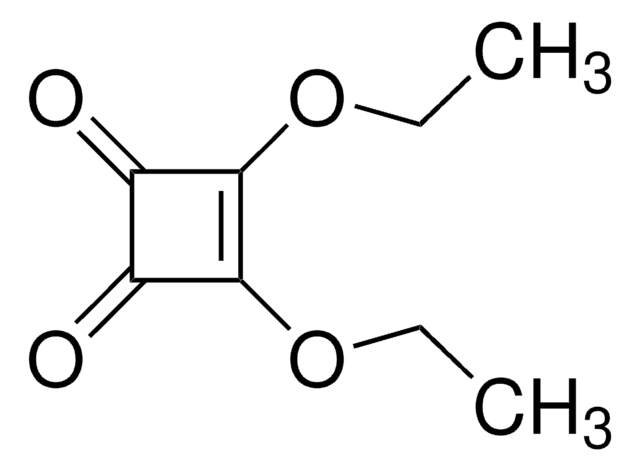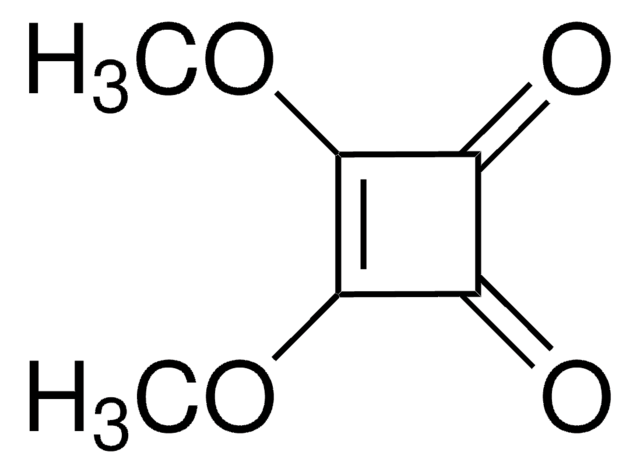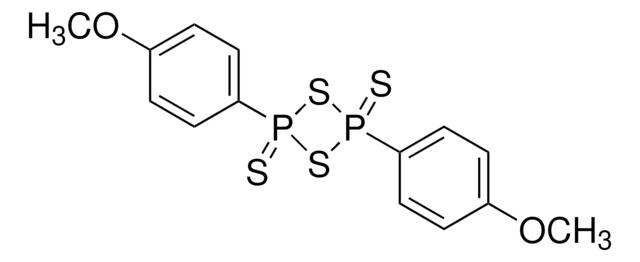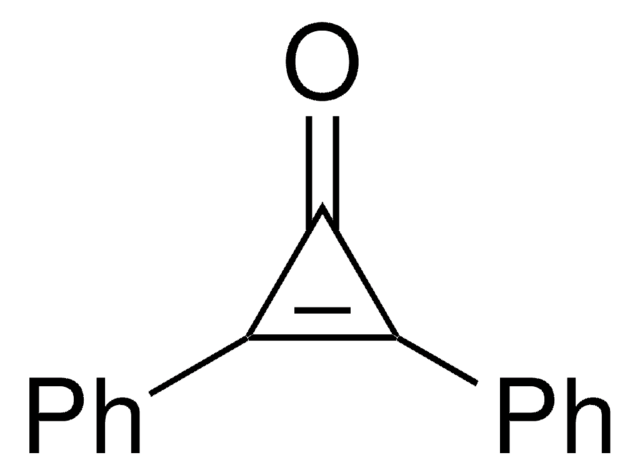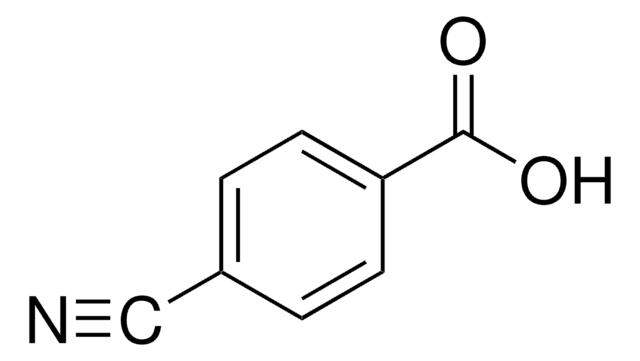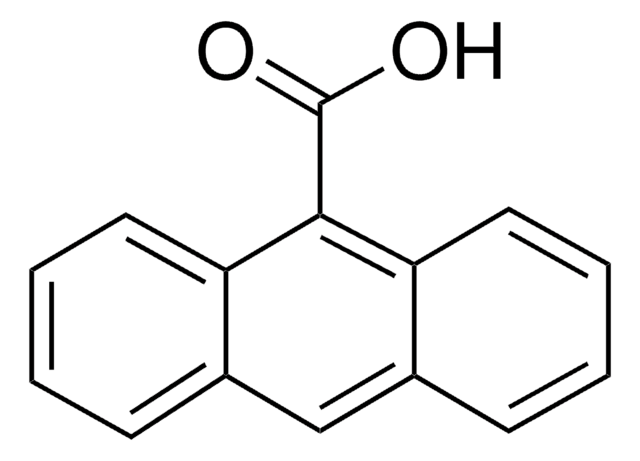339792
3,4-Dibutoxy-3-cyclobutene-1,2-dione
98%
Synonym(s):
Dibutyl squarate
Sign Into View Organizational & Contract Pricing
All Photos(3)
About This Item
Linear Formula:
[CH3(CH2)3O]2C4(=O)2
CAS Number:
Molecular Weight:
226.27
MDL number:
UNSPSC Code:
12352100
PubChem Substance ID:
NACRES:
NA.22
Recommended Products
Assay
98%
form
liquid
refractive index
n20/D 1.494 (lit.)
bp
139 °C/0.5 mmHg (lit.)
density
1.047 g/mL at 25 °C (lit.)
functional group
ether
ketone
SMILES string
CCCCOC1=C(OCCCC)C(=O)C1=O
InChI
1S/C12H18O4/c1-3-5-7-15-11-9(13)10(14)12(11)16-8-6-4-2/h3-8H2,1-2H3
InChI key
XBRWELTXMQSEIN-UHFFFAOYSA-N
General description
3,4-Dibutoxy-3-cyclobutene-1,2-dione is the dialkyl ester of squaric acid.
Application
3,4-Dibutoxy-3-cyclobutene-1,2-dione was used in the synthesis of novel semisquarylium dye, useful for highly selective Hg2+ sensing in aqueous media. It was also employed in the synthesis of 3-butoxy-4-(1,3,3-trimethyl-2,3-dihydro-1H-2-indolylidenemethyl)-3-cyclobutene-1,2-dione, intermediate for the synthesis of squaryl dyes.
Signal Word
Warning
Hazard Statements
Precautionary Statements
Hazard Classifications
Eye Irrit. 2 - Skin Irrit. 2 - Skin Sens. 1 - STOT SE 3
Target Organs
Respiratory system
Storage Class Code
10 - Combustible liquids
WGK
WGK 3
Flash Point(F)
235.4 °F - closed cup
Flash Point(C)
113 °C - closed cup
Personal Protective Equipment
dust mask type N95 (US), Eyeshields, Gloves
Choose from one of the most recent versions:
Already Own This Product?
Find documentation for the products that you have recently purchased in the Document Library.
Cutaneous lymphoid hyperplasia related to squaric acid dibutyl ester.
Eric A Millican et al.
Journal of the American Academy of Dermatology, 65(1), 230-232 (2011-06-18)
Molecular and crystal structure of 3-butoxy-4-(1, 3, 3-trimethyl-2, 3-dihydro-1H-2-indolylidenemethyl)-3-cyclobutene-1, 2-dione and its thio analog.
Shishkina SV, et al.
Journal of Structural Chemistry, 46(1), 154-158 (2005)
Amy J McMichael et al.
Dermatology nursing, 16(4), 333-336 (2004-10-09)
Though many therapies exist for alopecia areata, one of the most unique is topical sensitization. By altering the pathogenic inflammatory response with few side effects, sensitizers offer an attractive treatment option for many patients with alopecia areata, including those who
Aaron E Scott et al.
Toxicology and applied pharmacology, 183(1), 66-70 (2002-09-10)
The ability of chemical or pharmaceutical agents to induce allergic contact dermatitis (ACD) is of major health and regulatory concern. As such, tests to identify their sensitizing capacity, such as the guinea pig maximization test and the more recently developed
C Ajith et al.
Journal of drugs in dermatology : JDD, 5(3), 262-266 (2006-04-01)
Immunotherapy with sqauric acid dibutyl ester (SADBE) is a well-accepted therapy for alopecia areata. To study efficacy, safety, and factors influencing the outcome in the treatment of alopecia areata. During a 4-year period, 70 patients of alopecia areata, unresponsive to
Our team of scientists has experience in all areas of research including Life Science, Material Science, Chemical Synthesis, Chromatography, Analytical and many others.
Contact Technical Service